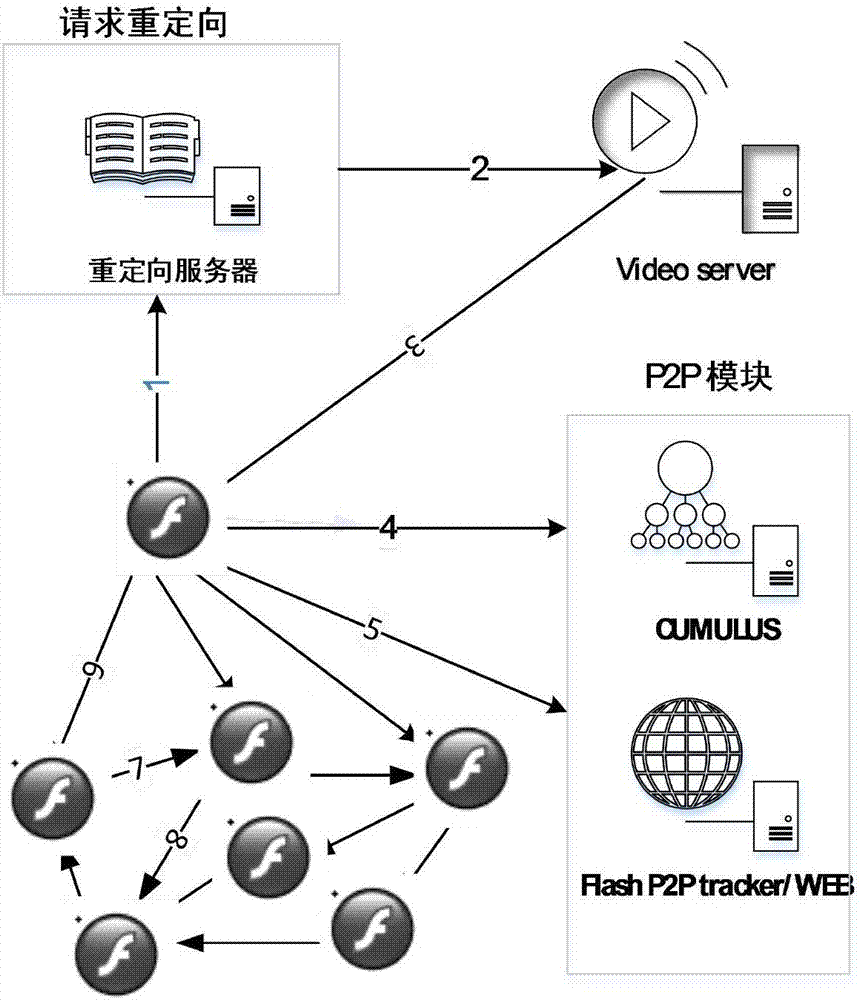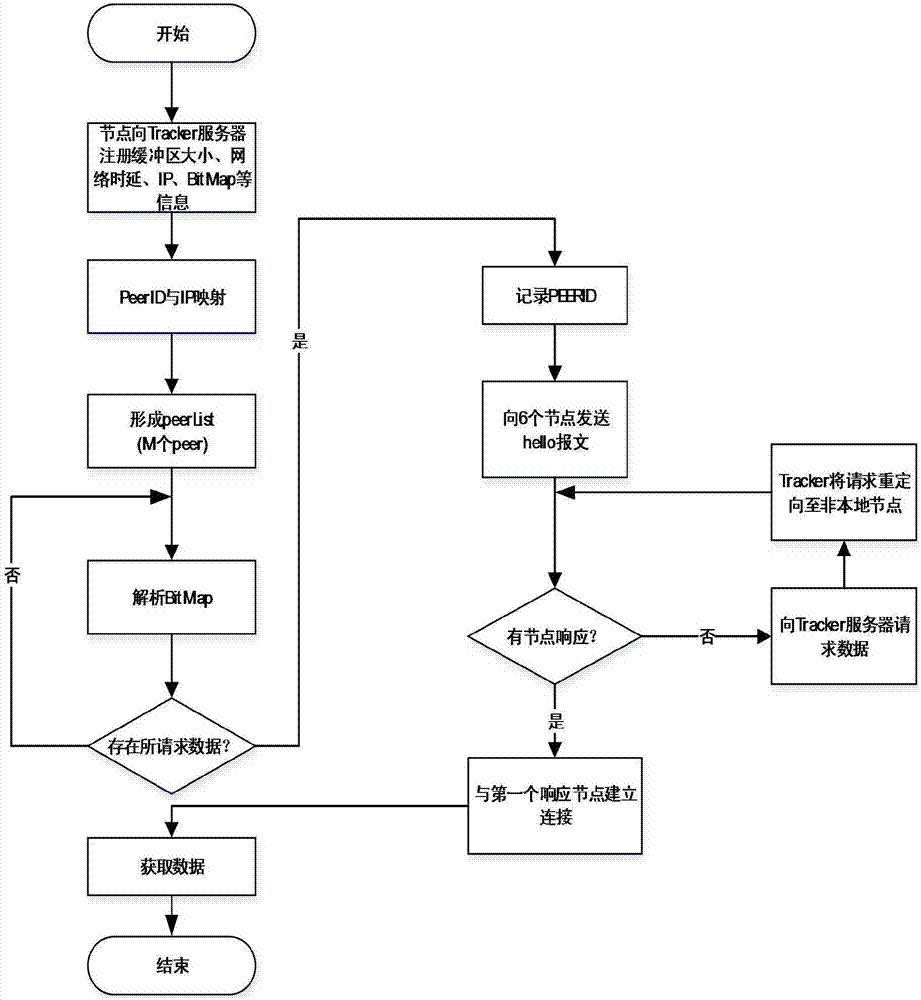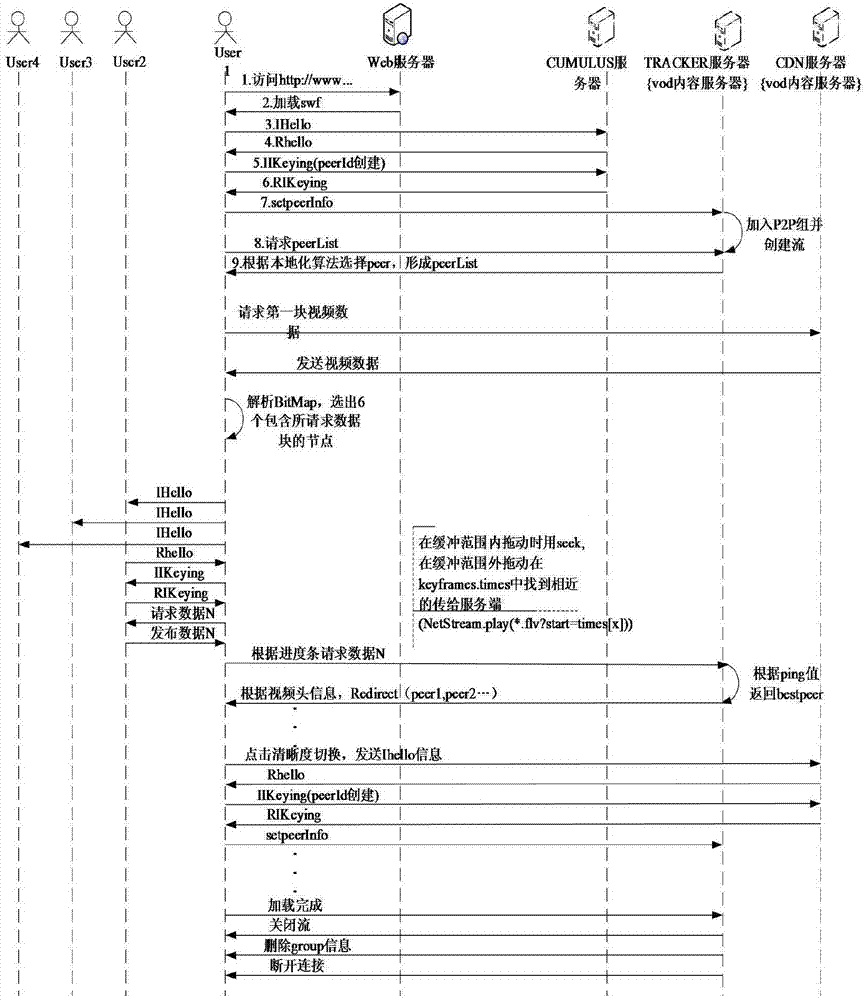A traffic localization optimization processing method in an Internet video-on-demand system
An Internet video and traffic localization technology, applied in image communication, selective content distribution, electrical components, etc., can solve problems such as lack of FLASHP2P localization processing, to ensure smooth video playback, reduce traffic pressure, and reduce network delays Effect
- Summary
- Abstract
- Description
- Claims
- Application Information
AI Technical Summary
Problems solved by technology
Method used
Image
Examples
Embodiment Construction
[0032] The traffic localization optimization processing method in the FLASH P2P on-demand system solves the problem that a large amount of FLASH P2P traffic causes a large traffic pressure on the operator's backbone network. In the selection process of nodes, local nodes are the main nodes, and non-local nodes are used as data copies. The following FLASH P2P VOD system traffic localization process, its corresponding flow chart and sequence diagram are as follows figure 2 , image 3 As shown, the specific process is as follows:
[0033] (1) The process of traffic localization
[0034] The specific steps are as follows:
[0035] (1) When the node requests a video, the node will request the first video slice from the redirection server.
[0036] (2) The redirection server will redirect the request to the video storage server.
[0037] (3) The node acquires video slices from the video storage server and plays them.
[0038] (4) The node applies for a PEERID (unique 256-bit cha...
PUM
 Login to View More
Login to View More Abstract
Description
Claims
Application Information
 Login to View More
Login to View More - R&D
- Intellectual Property
- Life Sciences
- Materials
- Tech Scout
- Unparalleled Data Quality
- Higher Quality Content
- 60% Fewer Hallucinations
Browse by: Latest US Patents, China's latest patents, Technical Efficacy Thesaurus, Application Domain, Technology Topic, Popular Technical Reports.
© 2025 PatSnap. All rights reserved.Legal|Privacy policy|Modern Slavery Act Transparency Statement|Sitemap|About US| Contact US: help@patsnap.com



